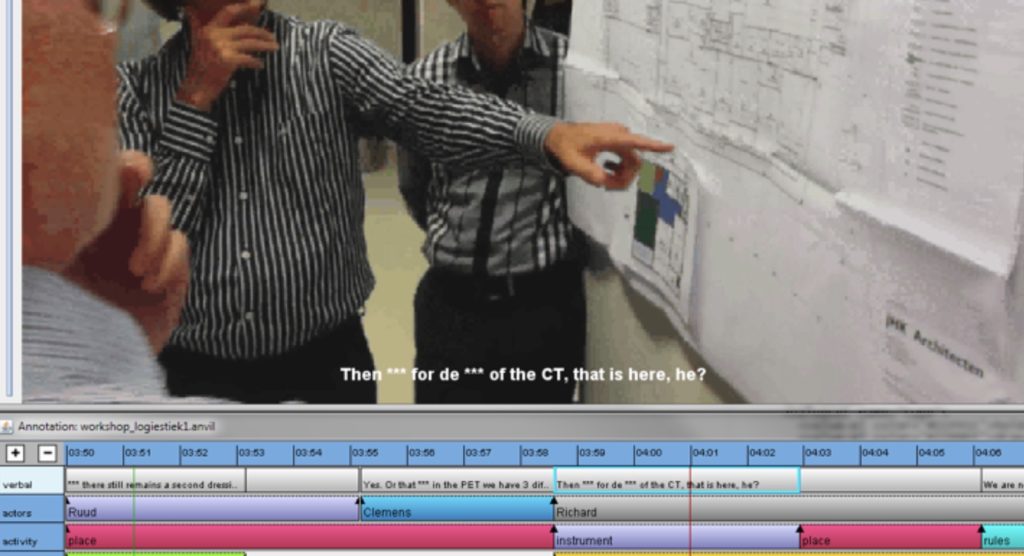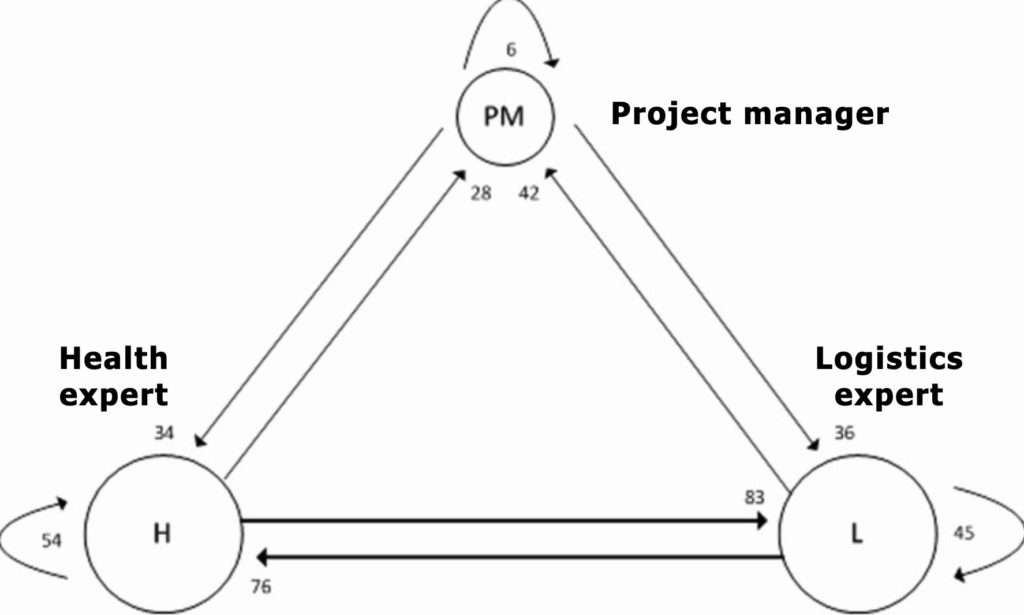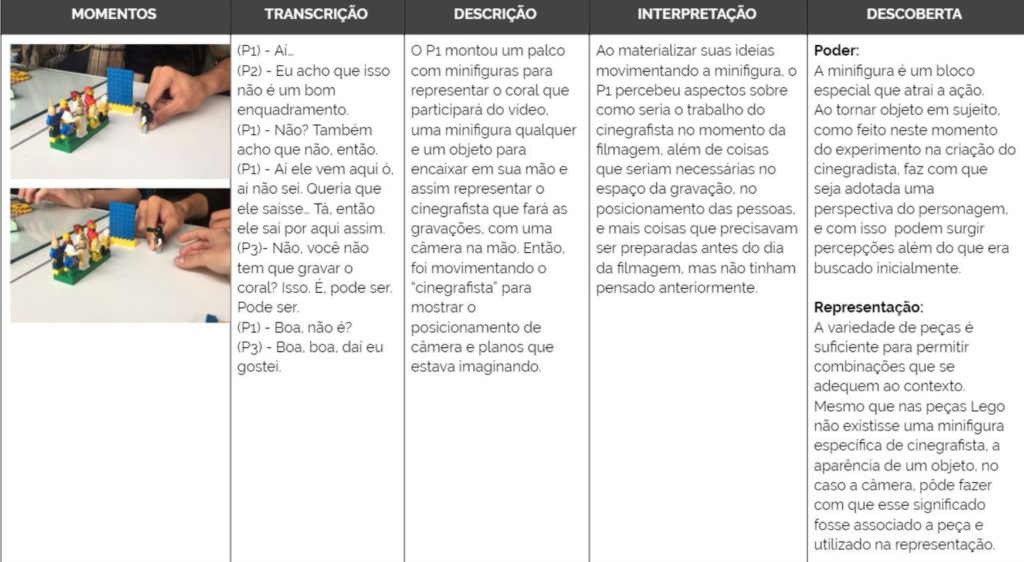Interaction analysis is a common method used in workplace ethnography. The everyday work interactions are recorded in audio or video to stand as material for discussion, analysis, and construction of evidence. Video offers the advantage of comparing verbal language with body language and, sometimes, including artifact use in data recordings. Interaction analysis cannot focus solely on the artifact, as it is the interaction between humans that is the material of interest. The process starts with recording the interaction and ends with interpreting interactors’ motivations and meanings. Along the way, there is some eventual transcribing, annotating, coding, and quantification, depending on the theoretical framework adopted. Qualitative Data Analysis tools that support multiple annotation tracks in a video file (e.g. ANVIL, ELAN, or Transana) are quite useful for fine-grained interaction analysis.

Data analysis software can generate qualitative metrics and graphs to produce convincing evidence, like the following transition graph from a leadership study. The graph represents how many times a speaker’s turn was followed by another speaker’s turn. In this case, the logistics expert manifested leadership-as-practice, differently from the expected leadership-as-role of the project manager.

A wider or longer interaction analysis can be conducted using a simple table with the following columns, to be filled in that same order:
- Selected still frames
- Verbal transcription
- Non-verbal description
- Interaction interpretation
- Findings

The power of video-based interaction analysis comes from the possibility of revising it so many times, as the data is playing again while being discussed by the researchers. It is also possible to include the participants who are featured in the video to interpret and discuss their actions.
I often use video-based interaction analysis in double stimulation experiments and design ethnographies.
References
Zerjav, V., Hartmann, T., & van Amstel, F. M. (2014). A leadership-as-practice perspective on design in architecture, engineering and construction projects: interaction analysis of a collaborative workshop. Engineering Project Organization Journal, 4(4), 1-13. DOI: http://dx.doi.org/10.1080/21573727.2014.970177
Jordan, B., & Henderson, A. (1995). Interaction analysis: Foundations and practice. The journal of the learning sciences, 4(1), 39-103.